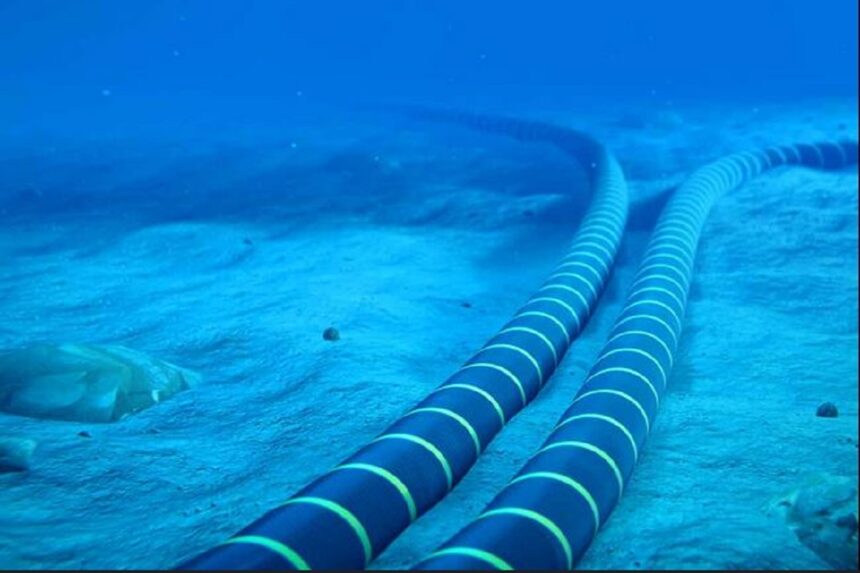A Strategic Shift in Response to Baltic Infrastructure Threats
NATO has announced plans to bolster its military presence in the Baltic Sea after a series of undersea cable incidents heightened security concerns in the region. The move follows the Christmas Day disruption of four Internet cables and one power cable linking Finland and Estonia.
Finland’s Eagle S Investigation Highlights Security Risks
The Finnish authorities have seized the Eagle S, a Russian oil tanker suspected of causing the cable cuts. Initial investigations revealed the presence of hi-tech equipment aboard the vessel, including numerous laptops with keyboards in Turkish and Russian languages. Finnish forces have boarded the ship, and the ongoing investigation has focused on a significant seabed drag mark near the damaged cables.
According to Sami Paila, Finland’s police chief investigator, “Our current understanding is that the drag mark in question is that of the anchor of the Eagle S. We have been able to clarify this matter through underwater research.” The drag mark spans nearly 100 kilometers (60 miles) and coincides with the site of the severed 658MW Estlink 2 cable, a critical electricity link between Finland and Estonia.
Estonia’s Naval Operation to Safeguard Infrastructure
Estonia has responded to the threat by launching a naval operation aimed at protecting its remaining critical infrastructure, including the 358MW Estlink 1 cable. The Estonian foreign minister, Margus Tsahkna, stated, “If there is a threat to the critical undersea infrastructure in our region, there will also be a response.”
Implications for the Baltic Region
The cable damage has compounded challenges for Estonia, which plans to disconnect from the Soviet-era power grid and integrate with the central European network by spring. Repairs to the severed cables are expected to take months, likely increasing electricity costs for Estonian consumers. This incident has underscored the vulnerability of undersea infrastructure and the need for enhanced regional security measures.
Patterns of Sabotage: A Growing Concern
This incident is the latest in a series of deliberate disruptions to Baltic undersea cables. Last month, a vessel was suspected of dragging an anchor for 111 miles along the seabed, severing two additional subsea cables. Another incident involved the cutting of a terrestrial Internet cable connecting Sweden and Finland at two separate locations. These repeated attacks highlight the region’s strategic significance and the growing risk to its infrastructure.
NATO’s Commitment to Baltic Security
In response to these threats, NATO Secretary General Mark Rutte has pledged to enhance military operations in the Baltic Sea. Finnish President Alexander Stubb echoed this commitment, emphasizing collaboration with Estonia. “We have agreed with Estonia, and our wish is to have a stronger NATO presence,” he said.
High-Tech Equipment Raises Suspicions
Lloyd’s List has reported that the Eagle S carried equipment atypical for a merchant vessel. The discovery of advanced technological devices has intensified suspicions about the ship’s involvement in the cable cuts. The presence of such equipment has raised questions about the potential for espionage or sabotage in the Baltic region.
Economic and Strategic Impacts
The cable disruptions have far-reaching implications for both regional stability and economic resilience. The Baltic region’s reliance on undersea cables for energy and communications makes these incidents a significant threat to national security and economic continuity. The damage to the Estlink 2 cable, in particular, has strained Finland and Estonia’s energy cooperation, further complicating their transition to a more integrated European grid.
FAQ Section
1. Why is NATO increasing its presence in the Baltic Sea? NATO is enhancing its presence due to repeated incidents of undersea cable damage, which threaten critical infrastructure and regional security.
2. What is the significance of the Estlink cables? The Estlink cables are vital electricity connections between Finland and Estonia, supporting energy cooperation and stability in the Baltic region.
3. How long will it take to repair the damaged cables? Repairs are expected to take several months, during which energy costs in Estonia may rise due to reduced capacity.
4. What equipment was found on the Eagle S? Authorities discovered advanced technology, including laptops with Turkish and Russian keyboards, raising suspicions of espionage or sabotage.
5. What measures are being taken to protect undersea infrastructure? Estonia has launched a naval operation to safeguard its infrastructure, and NATO plans to bolster its military presence in the region.



















